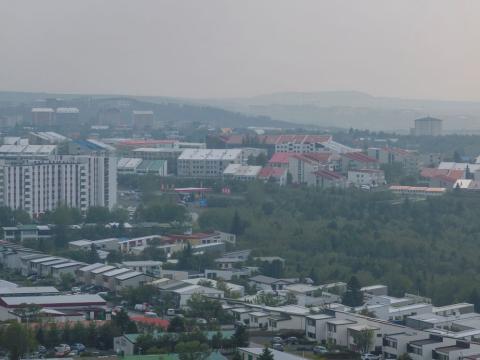
Reykjavík Public Health warns of volcanic haze and gas pollution over the capital. Southerly winds are carrying the pollution northward. This condition will continue through the day, according to the Meteorological Office. Increased precipitation and wind should improve air quality as the day progresses. Volcanic haze contains pollution that has transformed into SO4 (sulfate). It's not detected by standard sulfur dioxide (SO2) measurements. However, fine particulate matter measurements indicate this pollution is present. This morning, elevated levels of fine particulates and sulfur dioxide from the eruption are being measured.
Volcanic smog forms when SO2, other gases, and particles react with oxygen and moisture in sunlight. It has a characteristic blue-gray color from sunlight scattering on particles/spray. Volcanic smog can cause fatigue, headaches, eye and throat irritation, and flu-like symptoms. People with respiratory sensitivities and children should avoid prolonged outdoor activities and limit exertion. Less sensitive individuals may also experience symptoms and should limit outdoor exertion. It's not recommended to let young children sleep outside in strollers under these conditions.
General advice for gas pollution:
- Lung and heart patients should have their medications ready.
- Breathe through your nose and avoid physical exertion outdoors in heavy pollution to reduce the concentration reaching your lungs.
- Staying indoors with closed windows and turned-off ventilation provides significant protection from pollution.
- Note that dust masks offer no protection against gas pollution.
- Measures to protect against SO2 and other volcanic pollution indoors:
- Close windows and minimize use of outside doors.
- Raise the temperature in the house.
- Ventilate when outdoor air quality improves.
Air quality measurements are available on the Environment Agency's website loftgæði.is. Detailed instructions on responding to SO2 levels are available by clicking the link in the left corner of the page. Gas pollution forecasts are on the Meteorological Office website, but note this only covers direct pollution from the eruption, not volcanic smog.